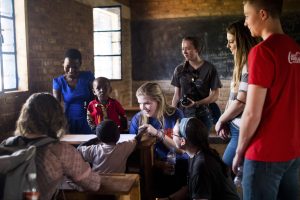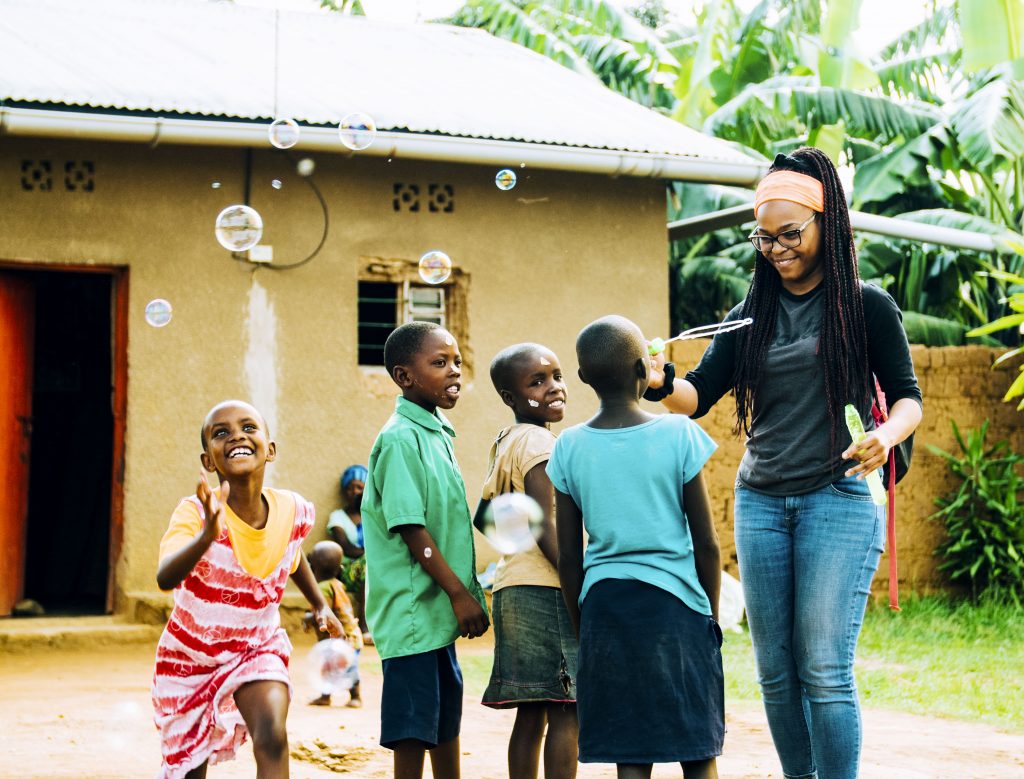Anticipation hung in the air early on the morning of March 15 as 71 Liberty students, including myself, and 19 faculty and staff prepared to leave for Rwanda for Liberty’s first G5 trip.
The anticipation did not wane and turned into excitement during the 10 days that both residential and online students as well as faculty and staff served and learned from the people of Rwanda.
Liberty kicked off its G5 initiative in September 2017, which is meant to explore multiple methods of how Liberty University can exemplify the characteristics found in Galatians 5 to a specific country each year, particularly in the five areas of government, economy, religion, entertainment and education, according to Liberty’s website.
As part of the initiative, students had the option to participate in several tracks while on the trip and earn credit for education, psychology, divinity and Christian Service.
“Each track… scattered (the students) throughout the day to accomplish their specific goals; some academically driven, some service driven,” said Brandon Milks, director of strategic planning and operations management at LU Send. “The ‘Scatter and Gather’ approach, as we’ve termed it, has been implemented on trips before, but not at this scale. And from our perspective, it was very successful.”
In partnership with Compassion International, we visited Compassion Development Centers to interact with children in the Compassion program by sitting in on their classes, playing with them, serving them lunch and listening to mothers in Compassion’s Child Survival Program.
“(We were) not just learning about Rwandan culture by observation, but (by) getting our hands dirty alongside them and actually getting in the classrooms learning, practically engaging with churches, getting our hands literally dirty with Christian service and that type of stuff,” Weston Martin, coordinator of data analytics and systems management who led a group of CSER students on the trip, said.

Over four days, two sets of CSER students, with each group going for two days, traveled to a remote village in southern Rwanda. There, we helped build brick and mud homes for two families who had children sponsored through Compassion.
“I have never seen a community so united like Rwanda,” Michelle Martinez, who went on the trip on the CSER track, said. “When we were building the houses (ladies were carrying bricks and) all of the community was there helping us. In America, we don’t do that.”
In addition to playing with children, visiting development centers and building houses, we also visited some Compassion offices and attended home visits where we got to meet and talk with Compassion beneficiaries and their families. Students who sponsored children had opportunities to meet them.
Rebecca Olsen, who traveled on the CSER track and met her two Compassion children, said that the language barrier was difficult while meeting her kids, despite the presence of a translator, but that meeting them was “surreal but awesome.”
“(Mothers) would erupt in applause when we said that we sponsored kids,” Olsen said. “It’s not a huge sacrifice for me, but these people are so, so thankful for me and I really wanted to tell them, ‘You don’t need to be thankful for me; I’m not worthy of it because every good thing comes from God.’”
While being able to talk and share stories with the Rwandan people and seeing the beauty of the “Land of 1,000 Hills,” we also learned about a dark chapter from the country’s history — the Rwandan genocide, which killed between 800,000 and 1 million people over the course of 100 days in 1994. We visited the Kigali Genocide Memorial and Mbyo Reconciliation Village, where victims and perpetrators now live together in forgiveness, watch each other’s children and even marry each other on occasion.
“Something that I really liked was after everything how people were able to forgive,” Martinez said. “After the memorial, we went to the reconciliation village, and I got mad at the people at the beginning when (a perpetrator) was telling his testimony. I was getting mad because I was like, ‘Why God? He killed so many people, and how is he still alive?’ But then I realized that was the purpose of the genocide — for people to be able to forgive and to be forgiven. That makes me realize that if (the victims) were able to forgive these people who killed their family, as Christians we are called to forgive people.”
Whether students served by teaching in schools with the education track or helping to build houses with the CSER track, Milks said he hopes they learned more about God and that every student he had spoken with had grown in their relationship with Christ through the trip.
“My hope, with all of our trips, is that the students who join us on these trips start or continue to see how they can use their education, and ultimately vocation, to spread the Gospel,” Milks said. “That doesn’t necessarily mean that you have to go to Rwanda after graduation, but hopefully God is doing a work in you where you have a heart for the nations … that the American dream status quo of graduating and landing a 9-5 job just to get a pay check wouldn’t be their desire. But rather, they would see God for who he is and pursue him with their entire beings.”
After a full spring break of interacting with children and growing close to some of the members of Compassion’s national program in Rwanda who hosted us, leaving was hard.
“Saying goodbye to the kids (and) saying goodbye to everyone was for me that hardest thing to do because I had never built so many good relationships in just a week, and it felt like I had been there for a month or for a year,” Martinez said. “To be honest, I had never been in a place that made me feel at home like Rwanda.”
